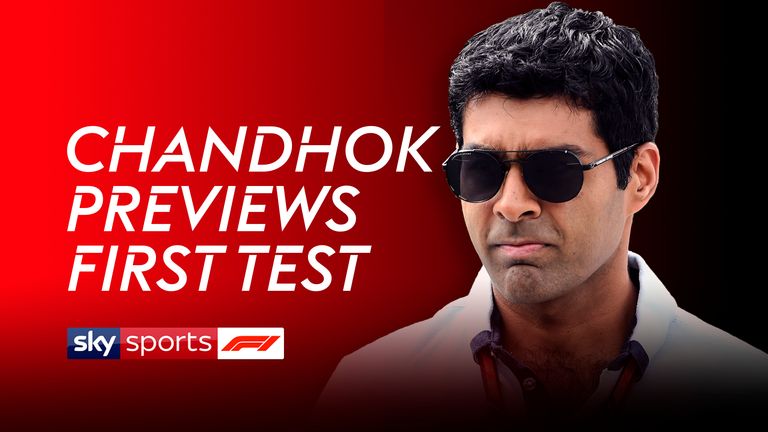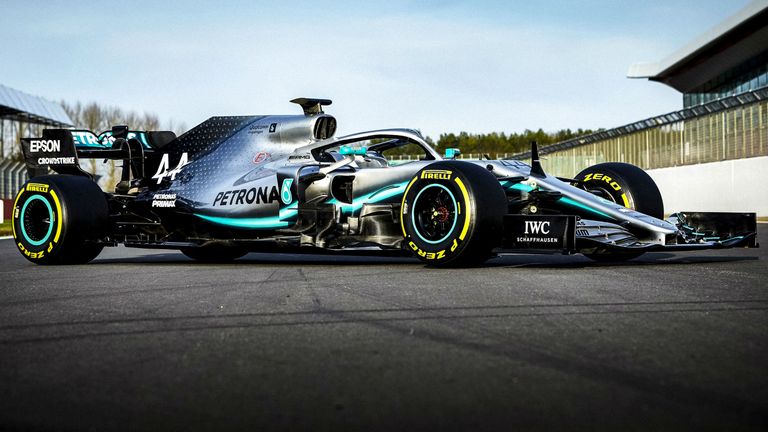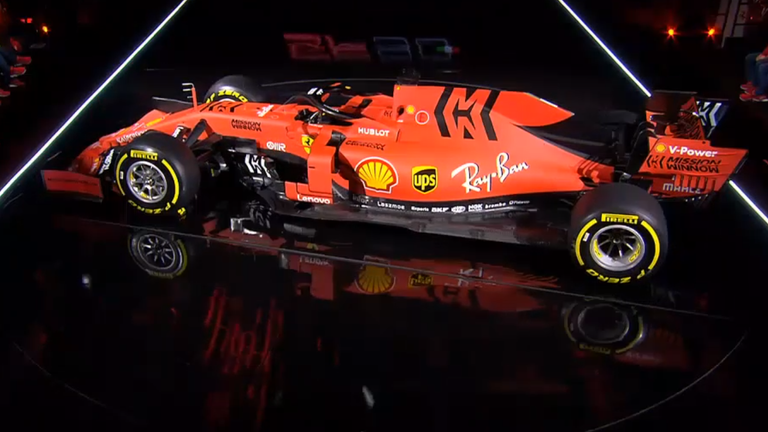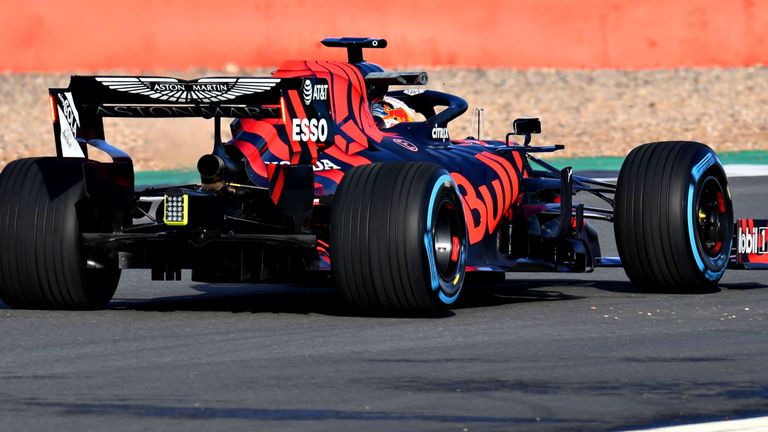F1 2019 Testing: Intriguing times ahead, predicts Karun Chandhok
F1 2019 ready for action; Sky Sports F1 to broadcast 20 hours of live coverage from first winter test; Barcelona meet starts on Monday
Sunday 17 February 2019 22:42, UK
I'm really looking forward to the trip to Barcelona this week where F1 2019 kicks off in anger.
First of all, it's going to be my first adventure with the Sky Sports F1 team since I last worked with the gang in 2013 but also we've got a lot of new things to watch out for this year.
We had a sillier silly season than normal last year which means that only two teams have retained the same driver line-up. There are plenty of fascinating sub-plots that are going to unfold as the year goes on such as:
Is Charles Leclerc going to be a thorn in Sebastian Vettel's side?
Will Daniel's Ricciardo's gamble to go to Renault prove to be an inspired decision?
Can Pierre Gasly step up to the challenge of taking on the phenomenon that is Max Verstappen?
How will Robert Kubica's return go?
Can Carlos Sainz fill the large void left by his fellow Spaniard Fernando Alonso?
Can the rookies Lando Norris, George Russell, Antonio Giovinazzi and Alex Albon establish themselves in F1?
What's different on the Formula 1 2019 cars?
Find out more about Sky Sports F1
We've also got some new aerodynamic rules for 2019 as well as a 5kg increase in the amount of fuel the cars can use during a race. The rule changes for 2019 have been ushered in as a bit of a tester for what's being seen as a whole new era of Formula 1 in 2021.
It's become clear that improving the ability to closely follow another car and therefore create overtaking opportunities is one of the biggest things that fans want to see from Formula 1.
At the moment with the bigger and highly complex cars, when a driver follows a competitor closely they lose about 20 per cent of their downforce - significantly more than the difference between a top car and one at the back of the grid. This also has a big effect on the tyres of the car that's following and so begins the vicious cycle that creates a lack of overtaking.
Over the past 18 months, Formula 1's technical group headed by Pat Symonds have together with the FIA been carrying out research into how to shape the future rules from 2021 which would make the cars less aerodynamically sensitive and therefore less problematic for drivers to follow closely.
Full details: F1 Testing live on Sky Sports F1
The changes include simplifying the design of the front wing elements and the endplates but also making the wings wider, taller and deeper to recoup some of the loss of downforce. The rear wing is also taller and wider with simplified endplates aimed at reducing the negative impact of the turbulent air on the following car. The slot gap in the rear wing with the DRS has been enlarged to increase the effect and improve overtaking. The rules around the barge board have been completely overhauled which means that they're now shorter but longer while the amount of aerodynamic devices around brake ducts have also been limited.
This hasn't been universally popular with several of the teams seeing it as an unnecessarily expensive stop-gap solution that's been rushed through but the FIA's stance is that with the rate of development in F1 today for the top teams, if they didn't do this, the situation for 2019 in terms of cars following each other would have been a lot worse. This way, at worst, it will be the same as last year and they will hopefully get some direction for 2021.
How much effect will the rules truly have? Well, I don't think it's fair to judge it in Melbourne because it's never been a great track for overtaking but let's evaluate it once we've done the first four fly-aways on four very different tracks.
What to look out for at testing
It's very important in pre-season testing to not look at the headline times. The big teams normally don't fully show their hand with the ultra low-fuel runs in the high power engine modes. In the past, you would see some unexpected headline-grabbing times from some of the smaller teams but nowadays with the amount of information that is available to the teams and the amount of competitor analysis that goes on, it's quite hard to genuinely shock people.
Looking at the long run averages are generally a good indicator of where things are at - I remember back in 2013 we saw Romain Grosjean in the Lotus do a 19-lap long run with very long tyre degradation which really confused everyone. Their headline times weren't great but it was sign of things to come where the car was genuinely competitive and was extraordinarily good on tyre wear.
It's going to be absolutely critical for every team to use every lap of testing to its full potential. With the aero rule changes, every team will have a huge list of things to validate and the pressure to correlate CFD, wind tunnel and simulation figures to the race track will be huge. The first four days of pre-testing in particular isn't about looking for the ultimate performance, but trying to get the car reliable and balanced.
The drivers will want to learn about the new cars and tyres so they will be praying for good reliability while they try and bank as many race distances as possible. We now know that the Pirelli tyres are extremely sensitive to temperature and track conditions so using the right tyre at the right time of the day is going to be very important while banking their information.
Performance in F1 is all relative and therefore the teams will have to keep an eagle eye on what other people are up to. The usual caveats of unknown fuel loads and engine modes will apply but if you spend eight days analysing long runs, you can sort of work out the pecking order.
F1 winter testing live on Sky Sports F1
Live television coverage on Sky Sports F1 of the first pre-season test at Barcelona will begin on Monday February 18 at 1pm and will continue until 6pm.
Sky F1 will also be broadcasting live coverage on Tuesday February 19, Wednesday February 20 and Thursday February 21 between 1pm and 6pm.
Our live review show, Welcome to F1 2019, will begin at approximately 5pm on every night of the test.
Selected highlights from the day's broadcast will be available on Sky Go, On Demand and the Sky Sports digital products.
A dawn-to-dusk live blog will also be available on the Sky Sports digital products for every day of winter testing, along with features, insight and reviews from Barcelona.
Regular updates from Barcelona will be published on our social accounts, while Craig Slater will be delivering live reports from the Circuit de Catalunya for Sky Sports News.
Get the dedicated Sky Sports F1 channel - the exclusive home of all live F1 next season - for £18 a month in HD with no contract. Get Sky Sports F1.





